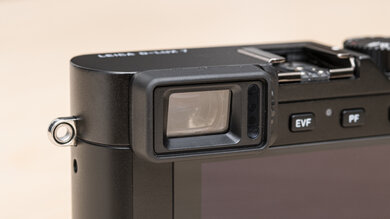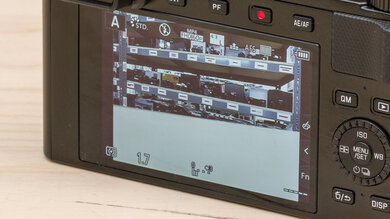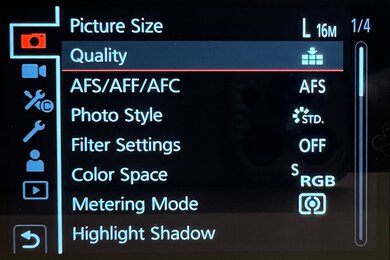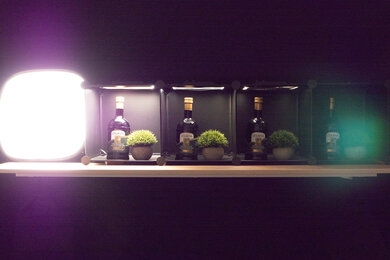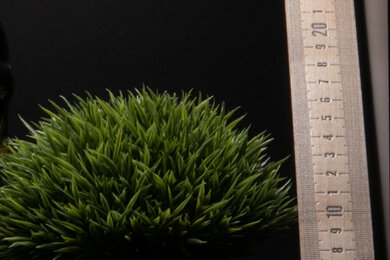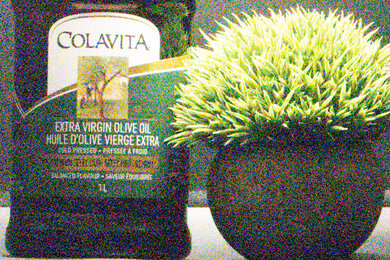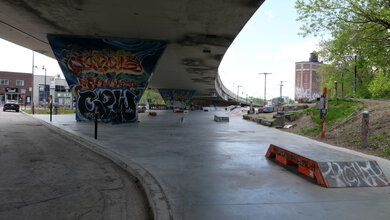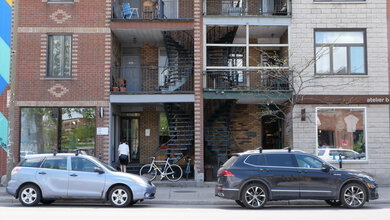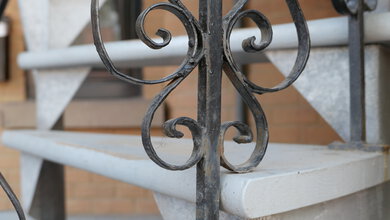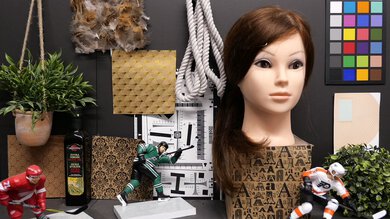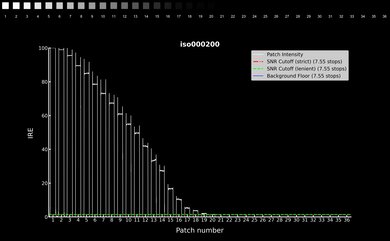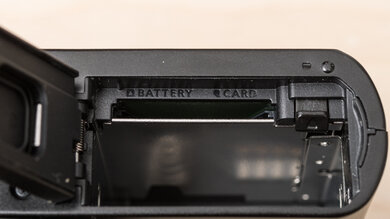The Leica D-Lux 7 is a point-and-shoot camera, first released in 2020. While Leica is known best for its premium German-engineered rangefinder cameras, this is a Panasonic LUMIX LX100 II clone with Leica branding. That's not the worst thing it could be, as, like the LX100 II, it's a portable enthusiast point-and-shoot with manual control dials and a relatively large Micro Four Thirds sensor that gives it a leg up in the image quality department. However, it doesn't offer much more than the Panasonic camera to justify its premium price.
Our Verdict
The Leica D-Lux 7 is decent for travel photography. It's highly portable and lightweight, with physical control dials that make it easy for manual shooters to adjust settings on the go. Image quality is also good for a compact camera. On top of that, it has a pretty good battery life. However, it lacks a hand grip, meaning it doesn't have the best ergonomics. Its autofocus system can also be sluggish and unreliable, especially with busier scenes or faster subjects.
- Portable.
- Dedicated exposure dials.
- Good battery life for a compact camera.
- Autofocus isn't very reliable.
- Poor ergonomics.
- Not weather-sealed.
The Leica D-Lux 7 is decent for landscape photography if you need something portable. Its Micro Four Thirds sensor is larger than most point-and-shoot cameras, so it has a fairly wide dynamic range for a camera of its size. However, it isn't the best option for low-light shooting, and it doesn't have the highest resolution, giving you less leeway to crop in. Its built-in lens gives you some flexibility with framing, and its minimum 24mm full-frame equivalent focal length is a solidly wide angle for landscape photos.
- Portable.
- Dedicated exposure dials.
- Fairly wide dynamic range for a point-and-shoot.
- Poor ergonomics.
- Not as much cropping leeway as higher-resolution cameras.
- Not weather-sealed.
The Leica D-Lux 7 isn't meant for sports and wildlife photography, though it's an okay option for casual sports photos or if you need something compact. It can shoot at a fast max burst rate to capture quick bursts of movement. However, it doesn't have a very large photo buffer; if you fill it up, it takes a long time to clear before you can shoot again. It also has a somewhat sluggish and inconsistent autofocus system that struggles to keep track of moving subjects. Its short zoom range also isn't ideal for far-away subjects.
- Portable.
- Good battery life for a compact camera.
- Quick burst shooting.
- Autofocus isn't very reliable.
- Small photo buffer.
- Poor ergonomics.
The Leica D-Lux 7 isn't meant for vlogging. It doesn't have a flip screen that you can use to monitor yourself while recording. Its sleek design makes it hard to maintain a secure grip if you aren't using a monopod or selfie stick. On the upside, it can record 4k video at up to 30 fps, with good video quality and decent battery life. However, it can only record in 4k with a noticeable crop.
- Portable.
- 4k 30 fps recording.
- Fixed screen.
- Poor ergonomics.
- Noticeable crop in 4k.
The Leica D-Lux 7 isn't meant for studio video. It has no ports to connect video peripherals like a microphone or external monitor. While it can record decent-quality 4k video, it can only record 4k video with a noticeable crop and has no high frame rate options for slow-motion recording.
- Portable.
- 4k 30 fps recording.
- Limited inputs/outputs.
- Lacking high frame rate options.
- Noticeable crop in 4k.
The Leica D-Lux 7 isn't meant for action video. It isn't designed for action cam mounts and lacks any kind of high-speed recording mode or high frame rate options for slow-motion or smooth fast action.
- Portable.
- Not designed for action video rigs.
- Lacking high frame rate options.
- Noticeable crop in 4k.
The Leica D-Lux 7 has okay RAW image quality. Its dynamic range is decent, but you'll lose some detail in either the shadows or highlights in very contrasty scenes. It doesn't have the highest resolution sensor, so while images look fairly sharp, there isn't too much leeway to crop in without losing sharpness. It isn't the best option for low light, either, though it does an adequate job of managing noise overall.
- Fairly wide dynamic range for a point-and-shoot.
- Not as much cropping leeway as higher-resolution cameras.
Performance Usages
Changelog
-
Updated Feb 24, 2025:
We retested and updated the score for Object Tracking in 4k, and the overall 4k Video Autofocus Performance score has been adjusted accordingly.
-
Updated Feb 17, 2025:
We added a comparison to the Leica D-Lux 8 in the Build Quality section.
-
Updated Feb 14, 2025:
We wrote text for the new tests added in Test Bench 0.13.
- Updated Feb 11, 2025: We've converted this review to Test Bench 0.13. We've added new tests for Video Dynamic Range and Luminosity Patch Detection. You can learn more about these updates in the changelog.
Check Price
Differences Between Sizes And Variants
The Leica D-Lux 7 comes in a few different variants. The camera originally came in two colors: Silver and Black.
More recently, Leica released a limited '007 Edition' to honor the legacy of the James Bond franchise. The 007 Edition features a textured leather grip around the body, making it easier to maintain a secure hold compared to the standard D-Lux 7, as well as a 007 logo engraved on the top plate and a gun barrel design on the lens cap. It comes with a custom holster to carry the camera.
There's also the 'A Bathing Ape x Stash' edition, which results from a collaboration with graffiti artist Stash and the Japanese streetwear brand A Bathing Ape. This model features a camouflage print body and specially designed accessories, including a camera bag, a rope strap, and a lens cap.
We purchased the Black model; you can see our unit's label. For the most part, we expect all the variants to perform similarly, aside from the aforementioned grip on the 007 model potentially affecting its ergonomics to a small degree.
Popular Camera Comparisons
The Leica D-Lux 7 is a compact fixed-lens camera. Like the Panasonic LUMIX LX100 II, it has a Micro Four Thirds sensor that's a bit larger than most point-and-shoot cameras, and it's designed with a smaller lens opening, allowing you to change the aspect ratio of your photos without affecting the angle of view. Its dedicated control dials make it easy to change exposure settings on the go, and it has a relatively sharp and fast lens. While it's a solid take-anywhere camera, it also carries a significant premium in price over similar point-and-shoots solely because of its Leica branding.
For more options, check out our recommendations for the best compact cameras, the best travel cameras, and the best cameras for street photography.
The Leica D-Lux 8 is a step up from the Leica D-Lux 7. While it still uses the same sensor and lens, it has a new processor and revamped design that gives it more of a true Leica feel. Streamlined and more intuitive controls make for a better overall shooting experience, and the added processing power gives it slightly better autofocus performance. Otherwise, you'll get roughly the same image quality and performance with both cameras.
The Fujifilm X100V is better overall than the Leica D-Lux 7. Both cameras have sleek designs, with physical control dials that make adjusting settings on the fly easier. Still, the Fujifilm camera has a larger sensor that captures better image quality and a more versatile hybrid optical/electronic viewfinder. That said, the Leica is more portable and has a bit of zoom range, giving you more framing flexibility.
The Panasonic LUMIX LX100 II and the Leica D-Lux 7 are similar cameras. The D-Lux 7 is essentially a Leica-branded LUMIX LX100 II. The biggest difference between the two cameras is that the Leica has a slightly different body, with no finger grip.
The Sony RX100 VII and the Leica D-Lux 7 perform fairly similarly overall. While the Leica has a larger sensor and is better suited for low-light situations, the Sony is more portable, has a more reliable autofocus system, and has a longer zoom range. However, it does have a worse battery life.
Test Results

The Leica D-Lux 7 is quite portable. It isn't the most compact point-and-shoot, with a larger profile than cameras like the Sony RX100 VII and the RICOH GR III. However, it's still fairly lightweight and easy to toss into a small bag or coat pocket.
You can see how portable the camera is with its lens fully extended here or with the flash accessory attached here.
The camera's build quality is decent and feels similar to the Panasonic LUMIX LX100 II. It's made of plastic and metal, though it doesn't feel as premium as the newer Leica D-Lux 8. For the most part, the buttons are sturdy and offer good physical feedback. However, some dials and inputs, like the zoom toggle around the shutter button, are quite sensitive and easily hit by accident. The back dial around the D-pad also feels a little dinky. The battery and SD card slot are behind a locking hinged door, which is good, but the camera isn't weather-sealed.
Because of its compact size, the Leica D-Lux 7 isn't very comfortable to shoot with, especially if you have larger hands. The buttons and dials are quite small, making it easy to accidentally make in input you didn't mean to. However, the dedicated exposure dials are nice for manual shooters who prefer not to mess around with menus, giving it an advantage over similarly sized compact cameras. Unlike the Panasonic LUMIX LX100 II, however, there's no finger/hand bump on the front of the camera, and the body is quite slippery, making it harder to maintain a secure grip. That said, the thumb grip on the back helps.
The EVF is quite small, though its resolution is decent, so you'll get a fairly sharp image through the viewfinder. That said, it isn't the most comfortable to use, with no real padding or eyecup.
The Leica D-Lux 7 has a fixed screen, which isn't the best for waist-level shooting or taking photos at unusual angles. Its coating is also quite reflective, making it harder to see on sunny days. On the upside, it has a fairly high resolution and full touch capability, so you can navigate settings, take photos, or select focus points using the display.
The menu system is nearly identical to that of the Panasonic LUMIX LX100 II, save for a different color scheme. The red underline isn't as obvious as the Panasonic camera's yellow highlight, so it's a bit harder to see what setting is selected, especially on the quick menu. Still, the menus are easy to navigate, and the settings are clearly organized. There's also an info function to explain certain settings and features.
Like the Panasonic LUMIX LX100 II, the Leica D-Lux 7 uses a multi-aspect Micro Four Thirds sensor. That means it doesn't use the full sensor, with a smaller lens opening that allows you to crop to different aspect ratios without affecting the angle of view.
The camera's battery life is good overall. It's CIPA-rated for about 340 photos on a full charge, which is pretty good for a compact camera, though your mileage will vary depending on how you use it.
the battery life is also decent for video. You'll get about an hour and a half of continuous video recording in 4k, which is good for such a small camera.
The Leica D-Lux 7 can shoot at a fairly quick max burst rate in continuous shooting mode. However, it has a small photo buffer, especially when shooting in RAW. If you fill it up, it takes quite a while to empty before you can start shooting again.
The camera uses a contrast-detection autofocus system, so it isn't as quick to focus as phase-detection autofocus systems like the one found on the Sony RX100 VI. It supports face and eye detection, but its continuous AF tracking isn't very quick or consistent. It easily loses track of very fast-moving subjects. However, it's okay for slower-moving or still subjects.
The continuous AF is a lot better when relying on a single center focus point, though it's still limited by its slow contrast-detection AF. You can still get plenty of usable shots when shooting like this, especially with slower-moving or more predictable subjects, but it can still be a bit slow to keep up with very fast subjects.
The camera doesn't have in-body sensor stabilization, but it does have optical image stabilization in its built-in lens, which helps somewhat. You can get stable shots at fairly slow shutter speeds handheld, but it won't reduce camera shake to a drastic degree. That said, stabilization performance can vary depending on what focal length you're shooting at and how steady your hands are.
The Leica D-Lux 7 can capture a wide range of shadow and highlight detail. However, it falls far short of full-frame cameras in that respect. In low light, with more noise, dynamic range drops off significantly.
The camera can resolve fine detail fairly well, but it's limited by the resolution and size of its sensor. You don't have too much leeway to crop or zoom in on your photos without losing detail and sharpness.
The camera has okay RAW noise handling, especially for a camera with a smaller sensor. Its wide aperture helps somewhat for low-light shooting, but it isn't as good at controlling noise levels when you have less light hitting the sensor and have to bump the ISO.
The Leica D-Lux 7 can only record 4k video with a noticeable crop. There aren't any high frame rate options in 4k, either. However, it's still good for casual or everyday video clips.
The camera's internal recording capability is okay. It has better heat management than most compact cameras but can still overheat during longer recording sessions. Unfortunately, there's a 15-minute cap on recording.
The autofocus in video mode is poor overall. There's a lot of hunting with faster or more erratic subjects, and its AF tracking isn't very reliable. It's a bit better with simpler subjects, like those moving from front to back at a moderate pace, but it's still not very quick to adjust.
Unfortunately, there's very bad rolling shutter effect in 4k, with heavy skewing and wobbling with quick pans and camera movements.
The camera can record at up to 60 fps in 1080p, which is great for smooth action video. Unfortunately, there aren't any higher frame rates for slow-motion recording.
The 1080p internal recording capability is decent. You have a longer recording time limit in 1080p than 4k, which is good for longer recording sessions.
The autofocus in video mode is mediocre overall. There's a lot of hunting with faster or more erratic subjects, and its AF tracking isn't very reliable. It's better with simpler subjects, like those moving towards or away from the camera at a moderate pace.
There's less rolling shutter distortion in 1080p, but you'll still get some visible skewing with faster camera movements.
The Leica D-Lux 7 doesn't support Log recording, so its dynamic range in video is limited. It can't capture a very wide tonal range, and you'll have very little room to make exposure or color adjustments in post.
Tested settings:
- Resolution: 4k
- Frame Rate: 30 fps
- Log Format: N/A
The Leica D-Lux 7 has a limited set of inputs and outputs. There's no headphone or microphone jack. It only has a Micro USB port for charging and file transfer and a Micro HDMI port for playback on an external monitor.






